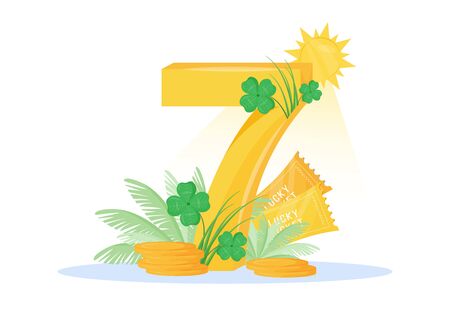Introduction to the Fate Line in Indian Palmistry
Within the profound tradition of Indian palmistry, the Fate Line—known as Shani Rekha—holds a revered place. Rooted in the wisdom of the Vedas and ancient rishis, this vertical line running from the base of the palm towards the Mount of Saturn is believed to be more than a mere marking; it is seen as an ethereal roadmap reflecting one’s karmic journey through life. In Indian culture, every line on the palm is thought to be woven by past actions (karma) and divine will, making the study of the Fate Line an act of spiritual inquiry as much as a predictive art. The presence, absence, or unique formation of Shani Rekha offers insight into an individual’s dharma (life path), their relationship with fate and free will, and how cosmic energies might unfold in their earthly journey. As we explore the significance of people born without a visible Fate Line, it is essential to understand its traditional meaning within the Indian worldview—a perspective shaped by centuries of spiritual reflection, astrology, and cultural belief in rebirth and destiny.
2. Absence of Fate Line: Insights from Vedic Texts
In the sacred landscape of Vedic palmistry, the absence of a Fate Line—also known as the Shani Rekha—invites deep reflection rooted in ancient Indian scriptures and traditional wisdom. According to classical texts such as the Samudrika Shastra, which forms the backbone of Indian palmistry, each line on the palm is said to be inscribed by past karmas and divine will. When an individual is born without a visible Fate Line, this is not seen as a lack or deficiency but rather as a unique spiritual configuration.
Ancient sages interpreted the missing Fate Line as a cosmic invitation to self-determination. Instead of being guided by rigid destiny, individuals without this line are considered to possess a more fluid life path, where free will (Swatantrata) plays a dominant role. The absence of the Fate Line suggests that such souls are less bound by predestined karma and have greater freedom to carve their own dharma (life purpose).
| Scriptural Reference | Interpretation | Spiritual Lesson |
|---|---|---|
| Samudrika Shastra | No Fate Line indicates heightened free will and adaptability. | Emphasizes self-effort (Purushartha) over fate. |
| Garuda Purana | Absence points to past-life merits or lessons yet to be learned. | Encourages self-inquiry and conscious living. |
| Brihat Parashara Hora Shastra | Lack of fixed destiny; soul’s journey is open and evolving. | Invites surrender and acceptance of life’s uncertainties. |
This interpretation aligns with Indian philosophical teachings that stress the balance between karma (action), bhagya (fortune), and purushartha (self-effort). People without a Fate Line are often encouraged by elders and gurus to embrace flexibility, cultivate inner strength, and consciously shape their own destinies. In many Hindu households, such hands are seen as blessed with opportunities for spiritual growth, as they are granted greater agency to write their own stories upon the canvas of life.

3. Cultural Beliefs and Community Perceptions
Across the diverse expanse of Bharat, the absence of the Fate Line—often called the ‘Rekha Rahit’ palm—invites a tapestry of beliefs, folk wisdom, and familial traditions. In North Indian villages, especially in Uttar Pradesh and Rajasthan, elders may recall ancient proverbs: “Rekha ka na hona, Bhagya par bharosa mat khona” (If the line is absent, do not lose faith in destiny), expressing a view that fate is not solely etched on the palm but also shaped by one’s karma and devotion. Among South Indian communities, especially within Tamil Nadu and Kerala, family astrologers known as ‘Nadi Jyotishis’ might interpret a missing Fate Line as an invitation for deeper spiritual sadhana rather than a sign of misfortune. They often counsel individuals to strengthen their dharma through rituals and service.
Regional Interpretations in Eastern and Western India
In Bengal, local lore sometimes suggests that people without a Fate Line are “Agnyaata Atithi”—mysterious guests whose destinies are hidden even from Yama, the lord of fate. This perception fosters humility within families, encouraging them to focus on present actions rather than worry about unseen destiny. Meanwhile, in Gujarat and Maharashtra, grandmothers may narrate tales during evening prayers, emphasizing that Goddess Lakshmi blesses those who create their own path—suggesting the absence of a Fate Line is a call to self-reliance and hard work.
Community Perceptions among Tribal Societies
Among Adivasi communities such as the Gonds and Santhals, palmistry is interwoven with nature worship. The lack of a Fate Line is neither feared nor revered; instead, it is seen as indicative of a soul unbound by societal constructs—a person free to carve their own journey. In their oral traditions, songs and stories celebrate such individuals as ‘Anant Pathik’ (eternal wanderers) blessed by ancestral spirits.
Family Traditions and Daily Life
Within many Indian households, family elders act as guides in interpreting palm lines during rites of passage—weddings, thread ceremonies, or naming rituals. If a child’s hand lacks the Fate Line, some families perform special pujas seeking blessings from Lord Ganesha to remove obstacles. Others simply remind each other that true fate lies not in lines but in love, learning, and righteous living. Thus across India’s sacred geography—from Himalayan hamlets to coastal hamlets—the cultural lens surrounding the Fate Line weaves together ancient faiths with everyday wisdom.
4. Spiritual Implications: Karma, Free Will, and Destiny
In the sacred teachings of Indian philosophy, the mysterious absence of the Fate Line—also known as the Shani Rekha—on ones palm invokes deep questions about karma (action), free will, and destiny. Vedic sages have long contemplated whether life is preordained by cosmic law or shaped by our conscious choices. The Fate Line, according to ancient palmistry texts like the Samudrik Shastra, is often considered a marker of one’s destined path and karmic burdens. When this line is absent, it opens a doorway to profound spiritual interpretation.
The Dance Between Karma and Free Will
Indian seers explain that every soul incarnates with a unique balance between karma (past actions influencing present circumstances) and free will (the power to make choices in this lifetime). The table below illustrates how the presence or absence of the Fate Line is viewed in relation to these forces:
| Fate Line Status | Karmic Influence | Free Will Emphasis | Spiritual Interpretation |
|---|---|---|---|
| Present & Strong | High – Past karma shapes life events | Moderate – Choices may be limited by destiny | Karmic debts are being repaid; life follows a set pattern |
| Absent or Weak | Low – Lesser influence from past lives | High – Greater freedom to shape ones destiny | Soul is learning self-determination; opportunity for spiritual growth through conscious action |
Interpretations by Indian Sages and Scriptures
The revered rishis interpreted an absent Fate Line as a sign that the Atman (soul) is granted greater autonomy in this birth. This aligns with teachings from the Upanishads, which emphasize sankalpa shakti—the power of intention. According to these ancient texts, when fate seems less defined by markings on the palm, it is an invitation for the seeker to exercise discernment and self-effort (purushartha). The Bhagavad Gita echoes this sentiment: “Man is made by his belief. As he believes, so he is.” (Gita 17:3)
Shaping One’s Spiritual Path Without the Fate Line
An individual lacking a prominent Fate Line is encouraged to become the architect of their own destiny through mindful action, prayer, and adherence to dharma (righteous living). Indian cultural wisdom teaches that such individuals are not bound by rigid patterns but are instead given a rare chance to create new karma. This spiritual path fosters humility, adaptability, and inner strength, allowing the soul to advance towards moksha (liberation).
5. Personal Growth and Remedies in Indian Practice
In the ancient wisdom of Bharat, when one finds their palm lacking a Fate Line, it is not seen as a curse but rather a call to conscious living and karmic refinement. Across India’s diverse traditions, spiritual masters, astrologers, and palmists offer practical remedies and sacred rituals to harmonise destiny’s flow for such souls.
Astrological Guidance from Jyotish Shastra
According to Vedic astrology, absence of the Fate Line signifies a need to strengthen Saturn (Shani) and one’s personal resolve. Astrologers often recommend wearing blue sapphire (Neelam) or black horse-shoe rings after proper consultation. Chanting the Shani mantra—“Om Sham Shanicharaya Namah”—on Saturdays, performing Shani puja, lighting sesame oil lamps, and offering black sesame seeds at temples are time-honoured remedies. Observing fasts on Saturdays and donating black clothes or food to the needy further appease planetary influences.
Yogic Practices for Self-Empowerment
Yogis advise those without a Fate Line to embrace specific sadhanas for grounding and clarity. Practising Surya Namaskar at sunrise, meditating with root chakra (Muladhara) affirmations, and regularly chanting “Lam” seed mantra help anchor one’s ambitions. Incorporating Karma Yoga—selfless service—and daily pranayama brings inner stability when external direction feels absent.
Palmistry Rituals & Sacred Symbols
Experienced palmists in India may suggest drawing auspicious symbols like the Swastika or Om with sandalwood paste on the right palm before significant endeavours. Regular application of sacred ash (vibhuti) or turmeric paste is believed to purify karmic pathways and invite divine guidance.
Cultural Practices & Family Blessings
Within Indian homes, elders bless those seeking purpose by tying a red thread (kalava) around the wrist, reciting protective mantras from Rigveda, or conducting havans (fire rituals) for Goddess Lakshmi and Lord Ganesha to invoke new opportunities.
Living with Awareness: The Ultimate Remedy
The greatest teaching imparted by Indian sages is that fate is ultimately moulded by present actions. For those without a Fate Line, conscious decision-making, performing daily prayers (puja), and cultivating gratitude unlock new destinies beyond markings on the hand. In this way, absence becomes an invitation—to create one’s own path through dharma, devotion, and self-effort.
6. Modern Indian Perspectives
In today’s India, the interpretation of the Fate Line—or its absence—has evolved significantly, blending ancient wisdom with modern sensibilities. Many young Indians, while rooted in their cultural heritage, approach palmistry and the concept of the Fate Line with a pragmatic outlook. For some, the lack of a Fate Line is no longer seen as a negative omen or a sign of spiritual deficiency; rather, it is understood as an invitation to forge one’s own destiny, echoing the timeless Sanskrit adage: “Atma Deepo Bhava” (Be your own light).
Modern spiritual teachers often encourage individuals to look beyond rigid interpretations. The Fate Line, or its absence, is now more commonly viewed as a symbolic reference point—a reflection of one’s evolving karma and personal journey. In urban centers like Mumbai and Bengaluru, where tradition meets innovation, people may consult both astrologers and career coaches, seeking guidance that respects both ancient shastras and contemporary aspirations.
This synthesis has given rise to new practices. It is not uncommon for someone to meditate on their palms or recite affirmations to activate their inner potential, regardless of visible lines. The focus has shifted from fatalism to self-empowerment: “If no path is marked on your palm, carve your own.” This attitude resonates with India’s growing entrepreneurial spirit and the belief in self-made success.
At the same time, elders and gurus remind seekers that the Fate Line is but one aspect of the vast ocean of Vedic palmistry. True destiny is shaped by dharma (righteous actions), shraddha (faith), and tapasya (effort). Thus, modern Indians often integrate palmistry insights with personal growth philosophies and practical life planning.
In conclusion, while reverence for the mystical power of the Fate Line persists in Indian culture, today’s interpretations are more inclusive and empowering. Whether one possesses this line or not, the prevailing belief among many Indians is that destiny can be co-created through conscious choices, spiritual discipline, and unwavering hope—uniting the wisdom of the ancients with the promise of tomorrow.


